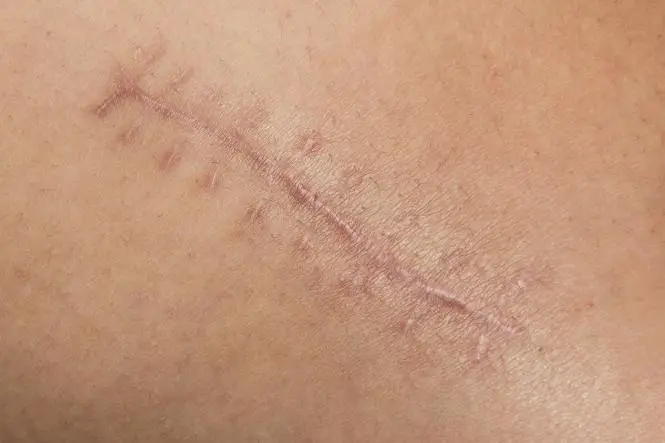There are many different methods that a forensic pathologist can use to make a positive identification against a corpse that finds its way onto his or her autopsy table; and one of the most useful and simplest is that of identifying scars, tattoos and birthmarks that may be present on the body.
These identifying features are to be found anywhere on the body and can be anything from small marks to large spreading birthmarks, tattoos that simply specify a name or have an elaborate artistic bent or scars from previous wounds.
Scars
Scars are often the result of past wounds or injuries that may have required hospital treatment and this is a good place to start for the pathologist who wants to make a positive identification.
Hospitals keep detailed records of all injuries and especially in the case of injuries that will have required an operation of sorts to rectify the problem. These operations may have been small – keyhole surgery – or major invasive surgery but they will have all left their own tell tale marks: i.e. scars.
In a patient’s medical files there will often be a detailed sketch of the anatomy and on it will be marked out areas of the body that were operated upon and this is a good place to start when it comes to identifying scars.
Tattoos
Tattoos again are unique in that most individual’s who have a tattoo do so because they want to make some sort of statement or to display their love for a loved one – a wife or child – or for an organisation or icon in their lives. This uniqueness makes tattoos another useful source of identification and again it is worth mentioning that many tattoo artists, if they have been commissioned to do a one-off tattoo will invariably take pictures of it for their own records.
These records can be useful as if they are shown a picture of the tattoo as photographed on the deceased they can match it against their records, which should include a name and address. It is worth remembering also that teenagers under the legal age will try and have tattoos or ear piercing without their parents’ consent, which in itself can be a good memory jogger for the tattooist.
Birthmarks
Birthmarks, like fingerprints and DNA, are unique to the individual bearing them and as such they can be as identifiable as if the person had a photograph in their pocket. Depending on the severity of the birthmark will depend on whether or not it is something that is easily recognised.
Again should a body be discovered that has an elaborate or extensive birthmark then photographs of it will be taken and used as a means of identifying the victim should facial identification not be possible. It is worth remembering that in some instances a formal identification by a family member may not be possible given the nature of decay to the body or the nature of wounds to the head and face so a birthmark can be useful in allowing a member of the deceased’s family to make a positive identification. Of course this identification is only acceptable after all DNA, blood tests and other methods of identification have been carried out.

